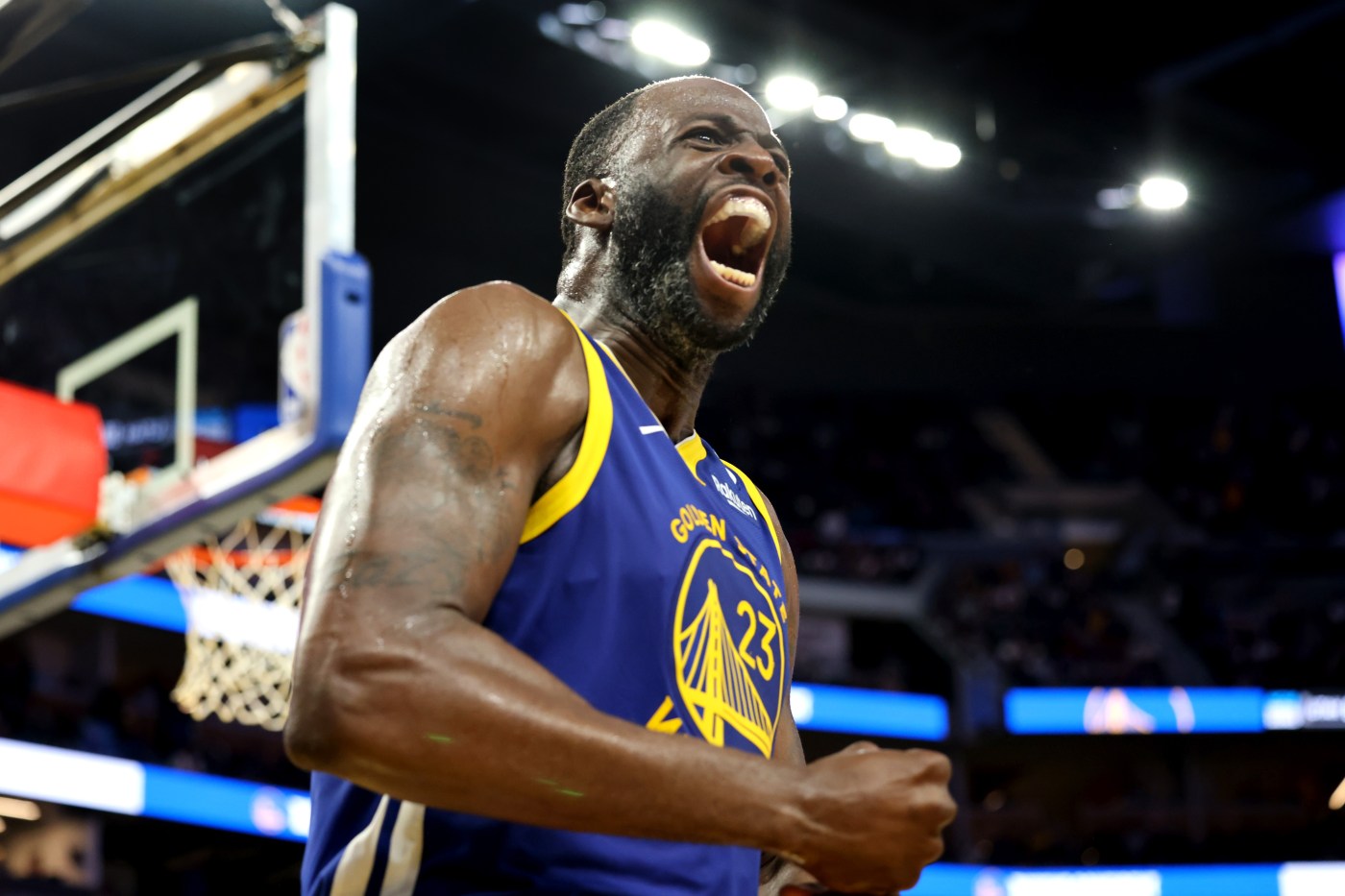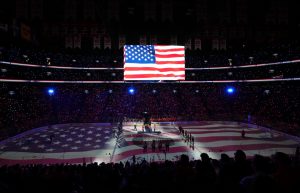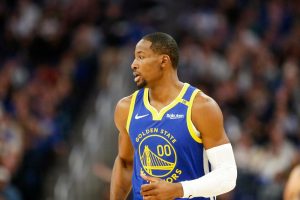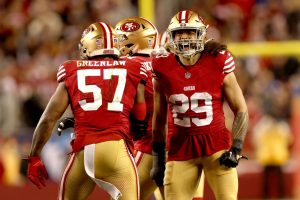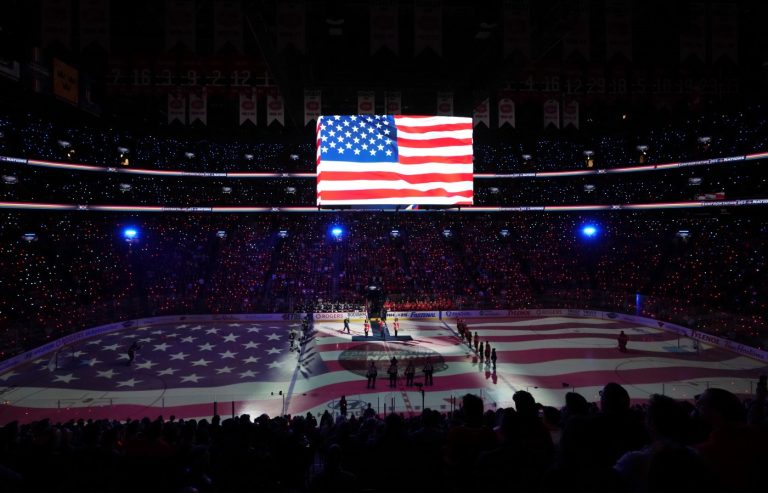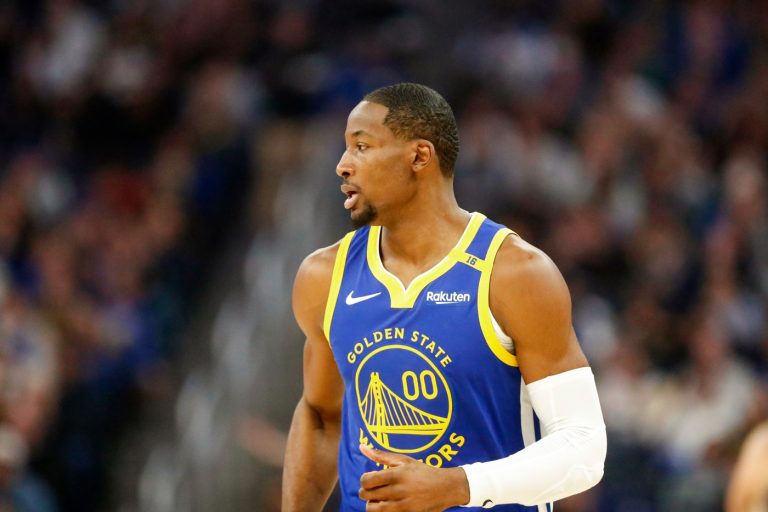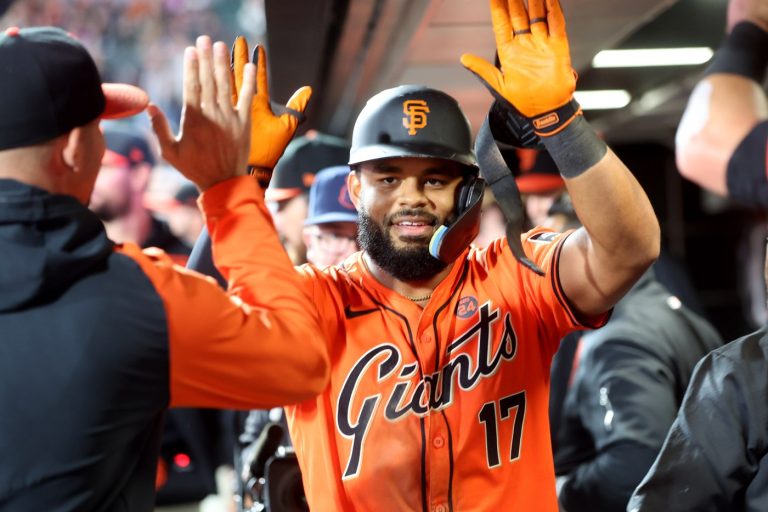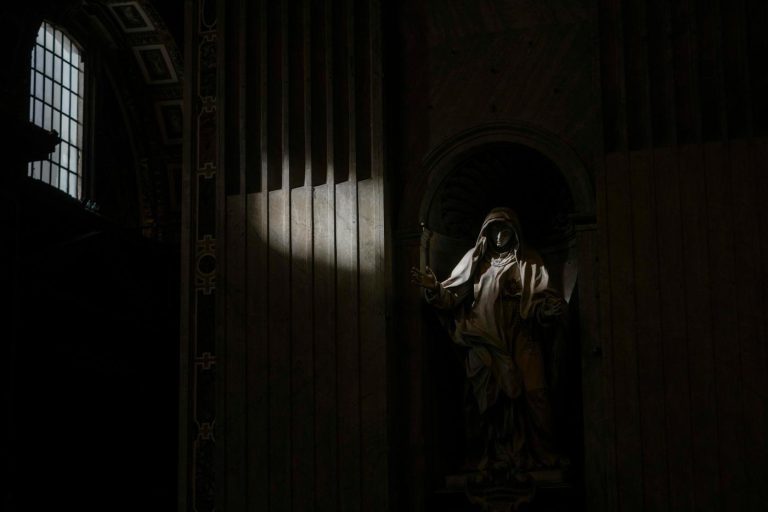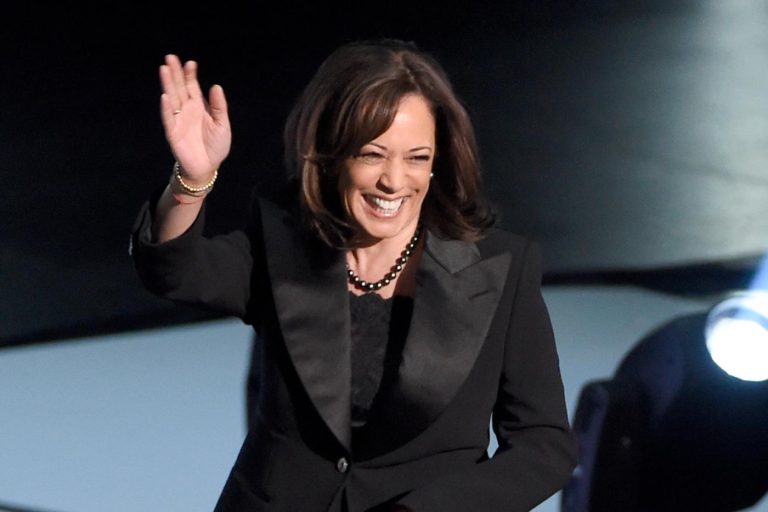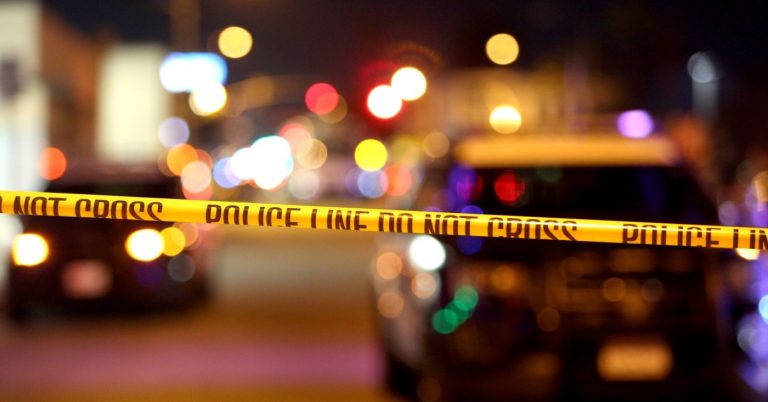SAGINAW, Mich. — The story has become lore within Draymond Green’s family, so much so that his mother and aunt fact-check each other while telling it.
Green, no more than 4 years old, hopped on his bicycle and rode across the tracks to the corner store in the part of town where he wasn’t supposed to go. Without any cash, he slapped a bag of chips and a juice on the counter.
The clerk at the register asked how the little dude was going to pay.
“You don’t know who I am?” Green asked the man at the register. “I’m Draymond Green!”
Off Green went, back home on his bike with an afternoon snack.
Green, of course, has grown and matured in the 30 years since. But in many ways, he’s still the kid riding his bike triumphantly back to his white house on the corner of North Second Avenue and Carroll Street in “The Nickel” neighborhood.
The competitive fire, the confidence, the toughness, the loyalty. The bravado. He’s still the kid devouring flour tacos from The Rite Spot on Lapeer Avenue and getting kicked out of practice for scuffling with teammates at the water fountain. The friend who bullies the bullies, standing up for himself and others.
“People have tried to stop me from being that way ever since I can remember,” Green, who turns 35 on March 4, told this news organization. “Same way people still try to stop me today. Change who I am? I don’t even know how I would do it. It’s just how I’ve always been, I don’t know how to change that. … Those that get to know me the best encourage it.”
The colors Green wears — Saginaw High black and yellow, Michigan State Spartan green, Warrior gold and blue — have changed. The game has changed since the bruising, unforgiving one he grew up watching. The teammates have changed, from the old championship guard to the new era. He’s gotten new friends, from Daniel West to LeBron James. He’s a father now, with gray in his beard. He entered the league without a dime, as his mom likes to say, and has now earned hundreds of millions.
It all started in Saginaw, the rough, tough town where any false move can set you back. A town where everyone knows everyone. A deeply American town that’s polarizing, violent, resilient, and almost arrogant. The town that has been hit, like so many in the dozen-or-so states that pick our president every four years, by deindustrialization.
The four championships, the eight All-Defense selections, the myriad self-inflicted wounds, the good, the bad and the ugly: They stem from Green’s upbringing and his refusal to discard it.
“I have a heart — that’s Saginaw,” Green said. “It always comes out. Sometimes not in the best way, but that’s why I always say: You’ve got to take the good with the bad. I can’t take the championships and take the All-Stars and take the Defensive Player of the Year — I can’t take those things but not take the bad.
“My gift is very much so my curse. Being from Saginaw is very much so a curse for me. It’s also the biggest blessing for me.”
…
In Saginaw, population 40,000, houses stand up seemingly on stilts, paint chipping away at the sidings. Businesses like General Motors departing the town have left Saginaw with a poverty rate of roughly 33.5%. A crime rate of 45.8 per 1,000 residents makes it one of the most dangerous communities of any size in the United States.
“You could not be a marshmallow in Saginaw,” said Mary Babers, Green’s mom.
Babers would constantly remind her son to be a leader, not a follower; to be tough and not soft. She was hard on him, and failure wasn’t an option.
One summer, after Green got in trouble at school for cheating on a test, Babers didn’t let her son play AAU. She removed his mattress from his room, forcing “Day Day” to sleep on the floor. No phone, no car, no television. He had to take summer school and fix up houses with their family friend, Tim Prince.
Seemingly every coach in the state knocked on their door that summer, asking if Draymond could come to this basketball event or that showcase. Babers turned them away. He couldn’t go to college with those kinds of grades, anyway, she told them.
“Every now and then, she’d tell me, ‘Oh, I’m proud,’” Green said. “But nothing was ever good enough. So when I look at really who I am, like yes, it’s Saginaw. But that woman, she was everything.”
From the time Green could walk, he and his older brother would climb on the walls like Spider-Man and jump off the stairs, swinging from the chandelier like Tarzan.
“I wasn’t the type of mother that stopped them from doing things,” Babers said. “If he wanted to climb up on the counter — go up and climb. To me, that’s how they learned.”
Green always had a roof over his head and food on the table, but it wasn’t like he could get those new basketball sneakers he wanted. His mom did secretarial work for the public schools to provide for Draymond and his older siblings Torrian and LaToya.
There was no court in town Draymond and his aunt Annette — a former national player of the year as a high school senior — shied from. He’d insist on playing with the older guys, including future Pittsburgh Steeler LaMarr Woodley, by grabbing the ball and chucking it at them. At Civitan Rec Center, Vincent Park, Unity Park or any other playground, no matter how old Green was, it was no blood, no foul.
“The heart we have here, I ain’t seen it anywhere else,” Babers said. “And I’ve been all around the world. This little city of Saginaw, we’ve got a desire, a fire that burns inside of us that does not burn anywhere.”
Green needed to be tough and he needed to be smart. Saginaw had its distinct style of basketball. He said, “It makes complete sense why I am the player that I am.”
Defiant and headstrong, Green had a one-track mind for basketball. In seventh grade, Green wrote a paper stating his goal to make the NBA. His teacher told him to come up with something more realistic. He told her that there was no Plan B.
Saginaw High School’s Draymond Green, right, jumps on to his teammates as they celebrate their 90-71 win over Detroit Pershing for back-to-back championships in the Class A state final in East Lansing, Michigan, on March 15, 2008. (Julian H. GonzalezDetroit Free Press)
Green was never the biggest nor the fastest. He never had the best jump shot. But Green was always the toughest and the smartest. Although Green led Saginaw to back-to-back state titles, outplaying Michigan’s Mr. Basketball Manny Harris in one of them, recruiting sites didn’t consider him a five-star prospect.
His uncle and youth coach, Bennie Babers, would boot him from practice for mixing it up with teammates at the water fountain. At an AAU tournament in Florida, he was kicked off the team bus and forced to walk to the rental house for arguing with a teammate. He’d outsmart opponents, using trash talk as a tool and his mind as a weapon. There were no out-of-bounds in his high school practices, so he’d fly into the stands for loose balls in front of college scouts.
“Nobody really thought he was going to make it,” said West, his childhood friend and Saginaw High teammate. “Even me and him used to argue about that. He really was an underdog.”
Like football was for Woodley or music for Stevie Wonder, basketball was a passport out for Green.
The town has gotten more violent since Green left, but it was dangerous in his time. His teammate, Josh Southern, lived next to the high school and often heard gunshots outside his house; multiple times, he said, bullets pierced his home. Over the summers, Saginaw High School coach Lou Dawkins would organize sleepovers at the gym so his players wouldn’t be out on the streets.
“Everything I’ve done, including making it out of that place, living through that place and surviving, is hard,” Green said. “You’ve got to fight for it.”
…
Michigan State’s Draymond Green reacts as he runs back down court in the second half of a 2012 NCAA tournament game against Louisville in Phoenix. (Photo by Jamie Squire/Getty Images)
Michigan State practices were legendarily intense under Hall of Fame coach Tom Izzo. All those days on the Saginaw playgrounds and at rec centers prepared Green.
One practice when Green was a senior, he was going at it with point guard Keith Appling. Out of nowhere, Derrick Nix — Appling’s former high school teammate — sucker punched Green in the jaw.
Izzo immediately kicked Nix out of practice. But Green wasn’t having it. There are two possibilities in Green’s mind when something like that happens: Either we’re going to fight, or we’re going to move on.
Earlier in Green’s Michigan State career, his role was reversed in a similar instance; Green got thrown out for beefing with Travis Walton, then a senior and now his close confidant. But Walton overruled Izzo. They had a game the next day and they needed Green locked in and at practice.
So, Green followed Nix to the locker room, cursing out Izzo on his way and shaking loose from teammates trying to hold him back. But instead of escalating with a counterpunch, he diffused the situation. Nix was standing up for their point guard, after all. Green made Nix put his sneakers back on and, after 10 minutes, walked back out to the court with him to resume practice.
“He’s an unbelievable teammate,” Izzo said of Green. “He can read the room. And sometimes, I think he reads the room on the floor. You know, when does my team need me to get fired up? Sometimes, does it go astray? Sometimes. But what I love about him is he’s not afraid to read the room.”
Scrap, settle it amongst men and move on. That’s how Green grew up.
“I come from an environment where that’s what you do,” Green said. “If y’all fight, y’all fight. But it don’t leave the court. Once it happens on the court, you move on. Happens in the NBA. Again, we play a very high intensity, emotional game. … I think every team I’ve been on, at some point or another, it’s happened.”
It’s moments like the Nix sucker punch that pain Green so much about the infamous Jordan Poole incident.
Green punching Poole in a 2022 preseason practice remains one of the pivotal moments in modern Warriors history. Their relationship was never the same. The punch tanked the team’s title defense chances. Any hope that Poole could carry what was left of the Warriors’ famed two-timeline plan went out the window.
Green regrets how the aftermath of the punch unfolded and doesn’t excuse his actions. He’s apologized several times, including earlier this year on social media. At his core, he cares about others and wants to look after them.
“It hurt me a lot, because I didn’t expect that,” Green said. “Because, like I said, I’m a product of that very thing — I’ve been on the wrong side of it. It’s just not something, the way I grew up, that you hold on to. So when it went that way, to me it was a little baffling. Because that’s really the only time I’ve seen it go that way. I can’t say that I’ve ever seen it go that way.”
If Michigan State was an extension of Saginaw, the Warriors represent its polar opposite.
“That’s something I’ve had to learn to navigate,” Green said. “When I got into the thing with (Jordan) Poole, that was a reaction coming from Saginaw, coming from Michigan State. Like, that was that reaction. I said right away, probably wasn’t the place for that. Like, ah, wrong place.”
Green hasn’t lived in Saginaw for years. But parts of him never left.
…
The Warriors’ Draymond Green shakes hands with then-teammate Jordan Poole during a game against Indiana at Chase Center in December 2022. (Nhat V. Meyer/Bay Area News Group)
Just like all of Green’s high-profile transgressions — the argument with Kevin Durant on the bench, the “robots” tirade to Steve Kerr in the locker room, the 2016 NBA Finals suspension — the Warriors stuck with Green through the Poole punch. They traded away the young guard and paid Green.
Since the Warriors selected Green, the 2012 Big Ten player of the year, in the second round of that year’s draft, their path to winning at the highest level has always involved Green — and Green being himself.
Green admits he has made his “fair share of mistakes” within the organization and he appreciates the Warriors have been “willing to do whatever it takes to get through” indiscretions.
“In a business like this, they could’ve just moved on,” Green said. “I don’t think that’s the most beneficial answer for anyone involved, but they could’ve. And nobody would’ve said a word. But that’s why we are who we are. That’s why we have the relationship that we have. That’s why I’ll be a Warrior for life.”
Green calls last season in particular the most “trying” of his career. The Rudy Gobert headlock and Jusuf Nurkic swipe earned him an indefinite suspension. He already wasn’t in the right head space and contemplated walking away from the game while sidelined.
What Green describes as “self-inflicted wounds” put him at a crossroads.
“What do you do coming off that?” Green said. “You either refocus and lock the (expletive) in, or you go in the tank.”
Green committed to therapy and constantly reminds himself about how far he’s come, grounding himself in perspective. In recent years he has learned to fend off a feeling of entitlement — the same entitlement he believes is making the league soft. He’s never been more introspective, often recalling that he’s just a kid from Saginaw.
He’s toed the line between aggression and self-destruction this year better, and teammates and coaches have raved about his engagement level outside of game time.
Yet the results haven’t been sterling. Before the Jimmy Butler trade, Green was unable to stabilize a defense that had cracked after the Warriors’ 12-3 start. He got sidelined by calf and back injuries.
Izzo recently called to try to fan his flames:
Izzo: You don’t have your fire; I hate it. Everybody’s telling me how great you’re doing. That worries me.
Green: Yeah, coach, but me being me is what’s costing me.
Izzo: But you NOT being you is what’s costing your team.
Related Articles
The Warriors have found their starting lineup
After All-Star break, Warriors gear up for ‘27-game playoff’
Why Steve Kerr likes Draymond Green’s championship prediction
By trading for Jimmy Butler, Warriors picked a path
Warriors on edge with NBA trade deadline on horizon
That’s the constant balance Green has to strike, and the microscope is always on him to make sure he’s not leaning too far in one direction. A week before the All-Star break, the league sent a warning to Green that he was being too aggressive, which perplexed the forward. There was no obvious incident that could have triggered the notice.
To Green, it was just the latest example of someone trying to change who he is, to put him in a box and constrict its walls. (League official Joe Dumars denied that the NBA sent an official letter.)
“I won’t (expletive) us,’” Green told general manager Mike Dunleavy. “‘But I have to be aggressive. We have to turn this season around, it’s the only way I know how to help turn the season around. So I have to. I promise I won’t (expletive) us.’”
Green scoffs at the idea that someone on a Saginaw playground would tell him to stop being so aggressive. They’d get laughed off the court. “You’d have zero respect,” Green said. Dawkins would never tell him to tamp down his aggression. Izzo tells him he’s too soft. So did his mom.
The Warriors of the past decade never would have become what they did without Green’s edge, without his heart, without his flexes, his screams and without him putting his arm around teammates. They wouldn’t have won four titles without his ability to guard centers six inches taller than him, without his vocal leadership.
Without everything that comes from Saginaw.
“Everything I have and everything I’ve lost, they come from the exact same place,” Green said. “Well, guess what? You’re going to have to make a decision: either you do that and receive the good and know that some bad’s going to come with it and you take it on the chin or you stop completely. Stop completely and you receive no good. I take the good with the bad.”
